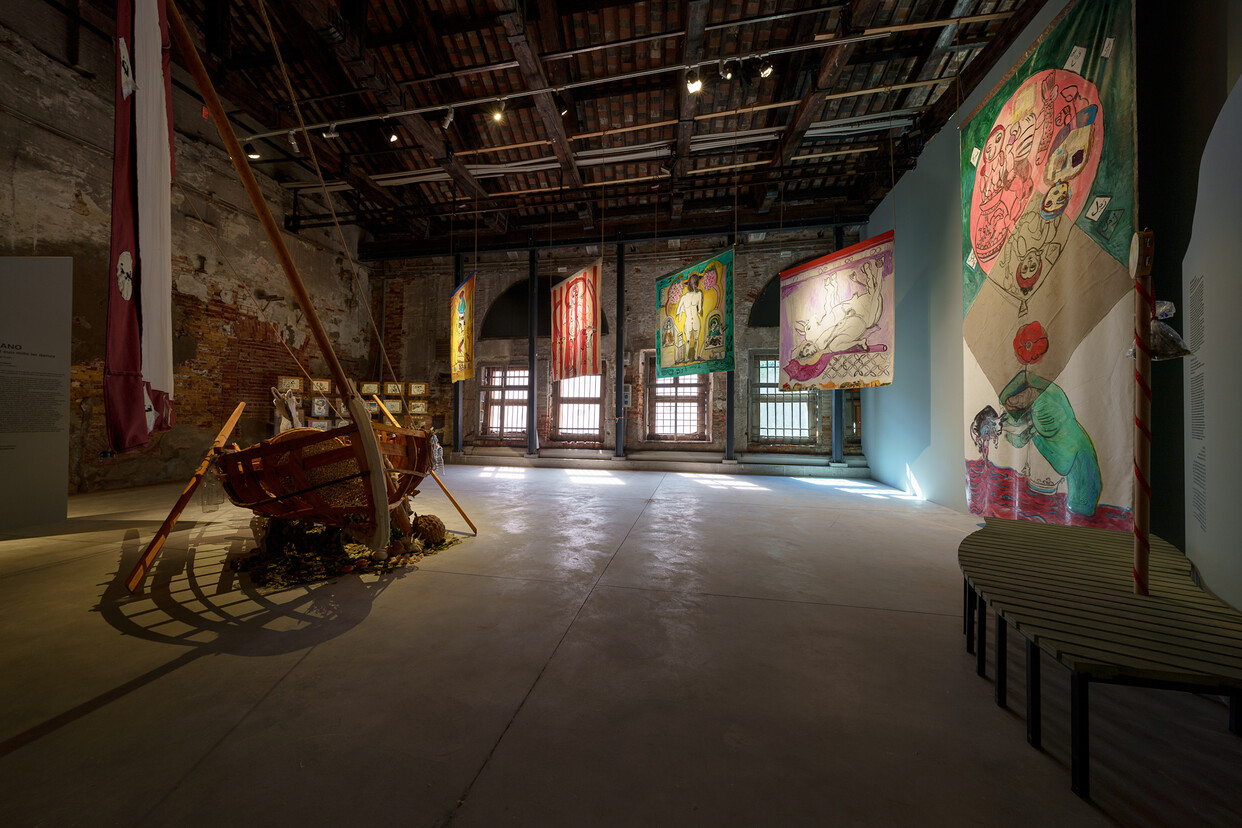National Pavilions at 60th Venice Biennale Under Scrutiny: A Critical Analysis by Kim Córdova
In her insightful examination of the 60th Venice Biennale, Kim Córdova offers a critical perspective on the presentations showcased within the national pavilions. Córdova juxtaposes these exhibitions with the Biennale’s overarching theme of “Foreigners Everywhere,” highlighting both their strengths and shortcomings in addressing contemporary issues.
One of the overarching themes observed across the national pavilions is the assertion of the past on the present. Córdova points out how conflicts in regions like Palestine and Ukraine, along with tensions between the West and China, serve as reminders of historical power dynamics rooted in the nineteenth and twentieth centuries.
Córdova delves into specific pavilions, discussing notable installations such as Wael Shawky’s “Drama 1882” at the Egyptian Pavilion, which reflects on pivotal moments in history, drawing parallels to contemporary socio-political contexts. Similarly, Mounira Al Solh’s “A Dance with her Myth” at the Lebanese Pavilion reimagines traditional narratives, offering a fresh perspective on identity and liberation.
The analysis extends to pavilions like Uzbekistan and the UAE, where contemporary art is explored as a diplomatic tool. Córdova praises the innovative approaches taken by artists to address issues of identity and domesticity, underscoring the significance of personal connections in art.
Furthermore, Córdova discusses Sandra Gamarra Heshiki’s thought-provoking “Pinacoteca Migrante” at the Spanish Pavilion, which critically examines the legacy of colonialism. Through thematic investigations and interdisciplinary approaches, Gamarra Heshiki challenges conventional narratives, inviting viewers to reconsider the impact of colonial ideologies on contemporary society.
Despite the richness of artistic expression within the national pavilions, Córdova raises concerns about the exhibition’s failure to reimagine its structural framework. She suggests that while the pavilions offer diverse perspectives, they fall short in addressing systemic issues inherent within international exhibitions and societal structures.
Córdova concludes by advocating for a more nuanced approach to representation and critique within the context of international art exhibitions. By interrogating dominant narratives and engaging with multifaceted perspectives, she believes that the Venice Biennale can serve as a platform for meaningful dialogue and social change.








